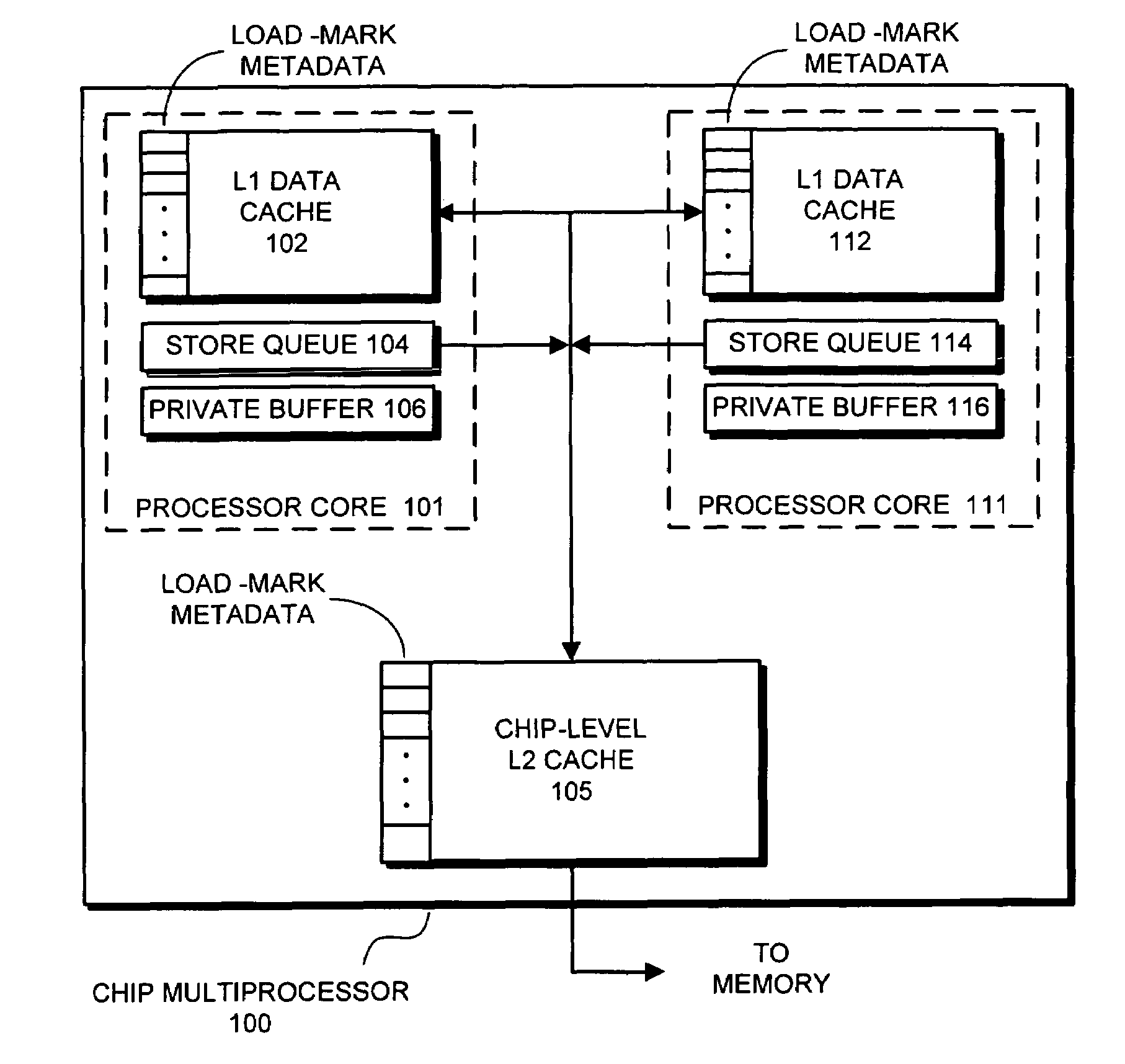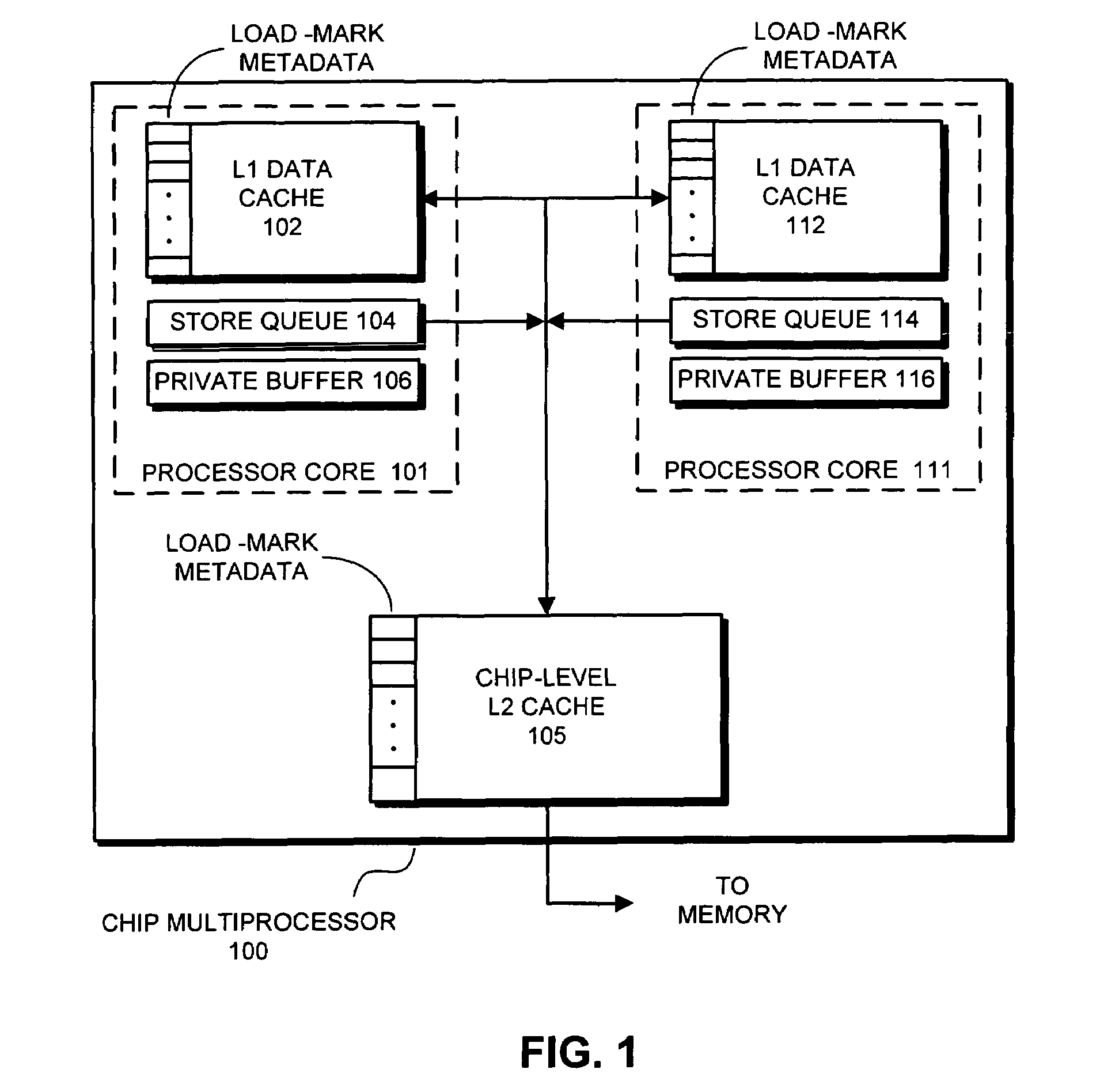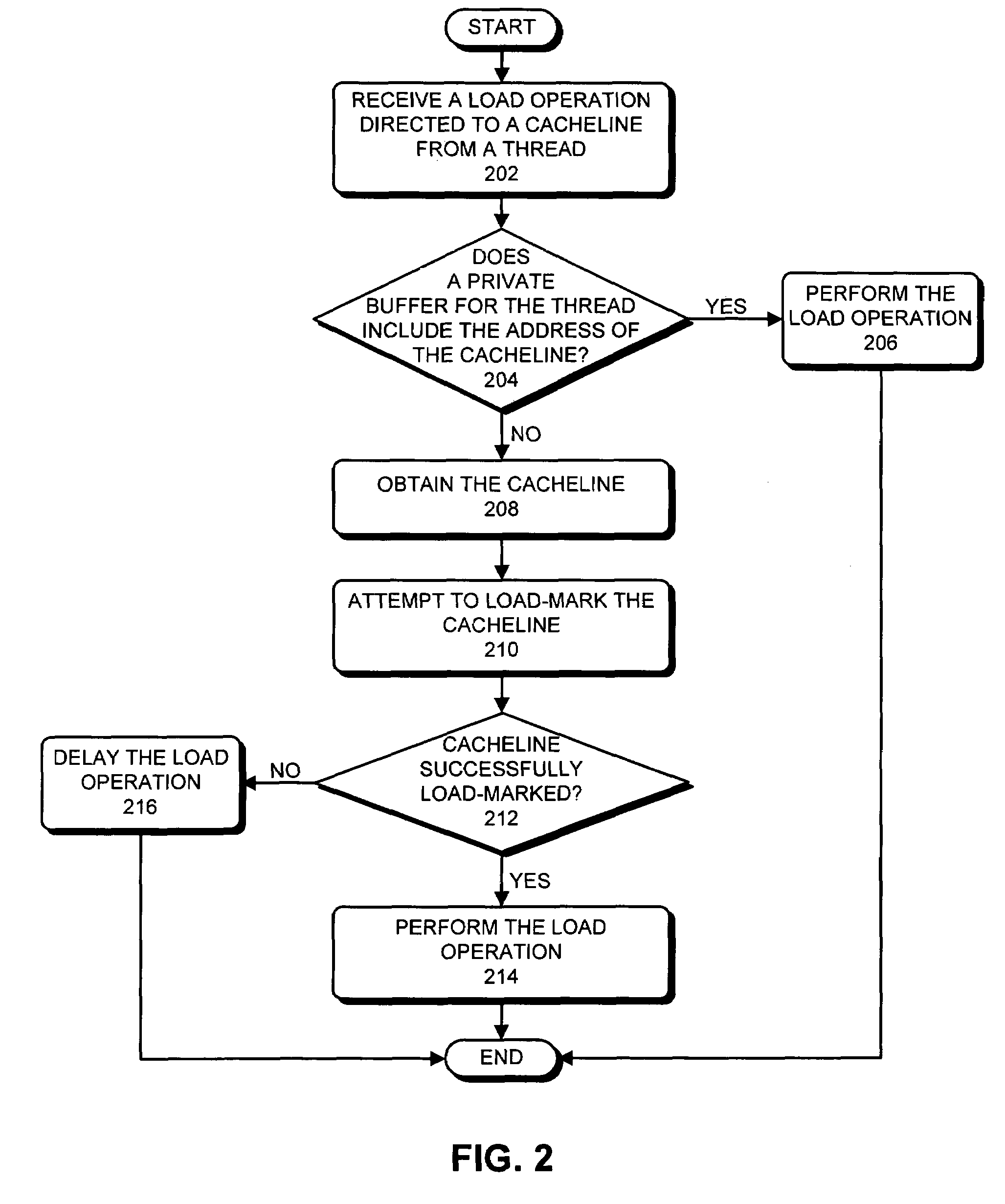Efficient marking of shared cache lines
a cache line and efficient technology, applied in the field of computer system design, can solve the problems of large fraction of time spent waiting for microprocessor systems, unable to meet the needs of microprocessor clock speeds, and unable to meet the needs of memory access speeds, etc., and achieve the effect of efficient marking cache lines
- Summary
- Abstract
- Description
- Claims
- Application Information
AI Technical Summary
Benefits of technology
Problems solved by technology
Method used
Image
Examples
Embodiment Construction
[0026]The following description is presented to enable any person skilled in the art to make and use the invention, and is provided in the context of a particular application and its requirements. Various modifications to the disclosed embodiments will be readily apparent to those skilled in the art, and the general principles defined herein may be applied to other embodiments and applications without departing from the spirit and scope of the present invention. Thus, the present invention is not limited to the embodiments shown, but is to be accorded the widest scope consistent with the claims.
Overview
[0027]One embodiment of the present invention provides a memory system which facilitates performing load operations out of program order. To accomplish this without violating a conventional memory model such as Sequential Consistency (SC) or Total-Store-Order (TSO), the present invention adds a load-mark to each cache line, wherein the load-mark can be propagated to all levels of the ...
PUM
 Login to View More
Login to View More Abstract
Description
Claims
Application Information
 Login to View More
Login to View More - R&D
- Intellectual Property
- Life Sciences
- Materials
- Tech Scout
- Unparalleled Data Quality
- Higher Quality Content
- 60% Fewer Hallucinations
Browse by: Latest US Patents, China's latest patents, Technical Efficacy Thesaurus, Application Domain, Technology Topic, Popular Technical Reports.
© 2025 PatSnap. All rights reserved.Legal|Privacy policy|Modern Slavery Act Transparency Statement|Sitemap|About US| Contact US: help@patsnap.com



